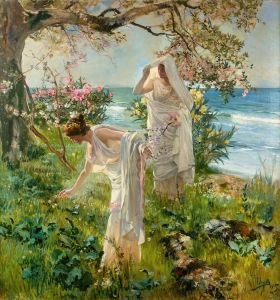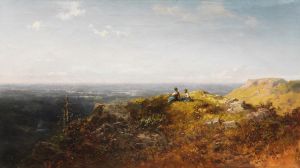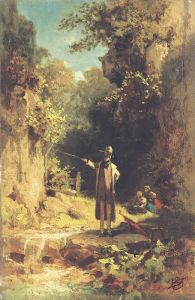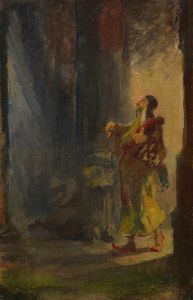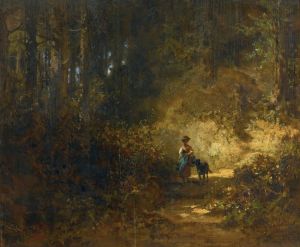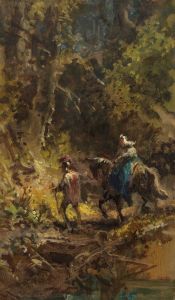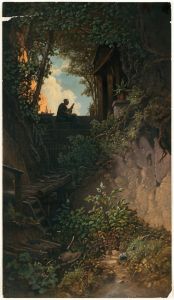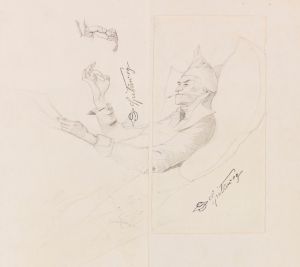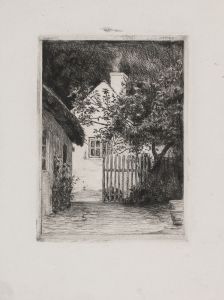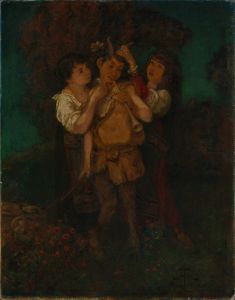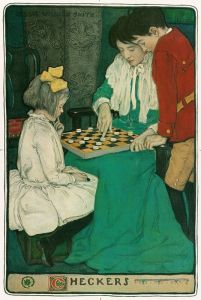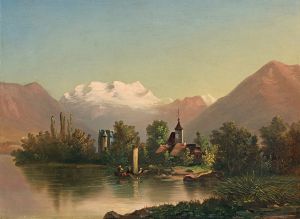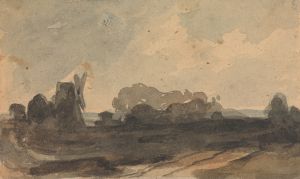
Blick ins Tal
A hand-painted replica of Carl Spitzweg’s masterpiece Blick ins Tal, meticulously crafted by professional artists to capture the true essence of the original. Each piece is created with museum-quality canvas and rare mineral pigments, carefully painted by experienced artists with delicate brushstrokes and rich, layered colors to perfectly recreate the texture of the original artwork. Unlike machine-printed reproductions, this hand-painted version brings the painting to life, infused with the artist’s emotions and skill in every stroke. Whether for personal collection or home decoration, it instantly elevates the artistic atmosphere of any space.
Carl Spitzweg was a 19th-century German painter known for his detailed and often humorous depictions of everyday life. One of his notable works is "Blick ins Tal," which translates to "View into the Valley." This painting is a fine example of Spitzweg's ability to capture the serene beauty of nature combined with the quaint charm of rural life.
"Blick ins Tal" showcases Spitzweg's characteristic style, where he often depicted idyllic scenes with a touch of romanticism. The painting presents a picturesque view of a valley, likely inspired by the landscapes of Bavaria, where Spitzweg spent much of his life. The composition typically includes lush greenery, rolling hills, and a tranquil atmosphere that invites the viewer to appreciate the peacefulness of the natural world.
Spitzweg was known for his attention to detail, and "Blick ins Tal" is no exception. The painting likely features meticulous brushwork that captures the textures of the landscape, from the leaves of the trees to the gentle flow of a stream or river that might be present in the valley. His use of light and shadow would have been carefully considered to enhance the depth and realism of the scene, a hallmark of his artistic technique.
The painting reflects the Biedermeier period's aesthetic, which emphasized a return to simplicity and a focus on the domestic and the familiar. This period, spanning from 1815 to 1848, was marked by a sense of stability and prosperity in the German-speaking regions, and art from this time often celebrated the beauty of everyday life and the natural world. Spitzweg's work, including "Blick ins Tal," fits well within this context, as it embodies the era's appreciation for the picturesque and the serene.
Carl Spitzweg's paintings often include subtle narratives or elements of humor, although "Blick ins Tal" primarily focuses on the landscape itself. However, his works are known for their ability to evoke a sense of nostalgia and a longing for the simplicity of rural life, which might be subtly present in this painting as well.
Spitzweg was largely self-taught, having initially pursued a career in pharmacy before dedicating himself to art. His scientific background may have contributed to his keen observational skills and his ability to render natural scenes with such precision and care. "Blick ins Tal" is a testament to his skill in capturing the essence of the landscapes he so admired.
Today, Carl Spitzweg is celebrated as one of Germany's most beloved 19th-century painters, and his works continue to be appreciated for their charm, wit, and beauty. "Blick ins Tal," like many of his paintings, invites viewers to step into a world where nature and humanity coexist harmoniously, offering a glimpse into the tranquil and picturesque world that Spitzweg so masterfully depicted.





